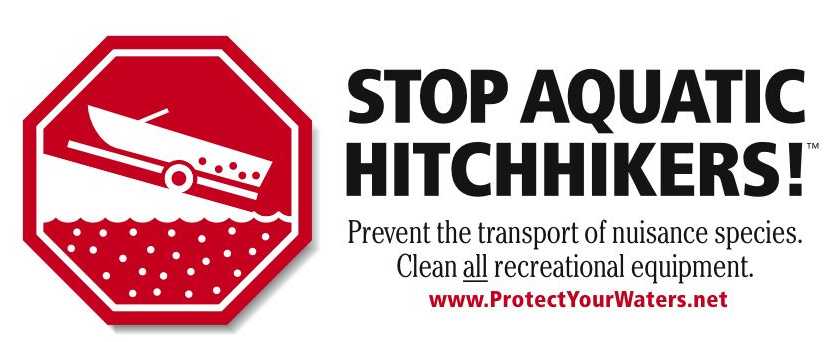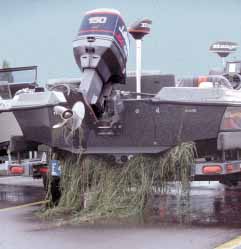

Enjoying the great outdoors is a privilege and important to many of us. Boating, fishing, hunting, and watching wildlife are activities that we want to preserve for our children and their chidren. Due to aquatic invaders these wonderful activites are at risk. There are currently national campaigns that help recreational users become part of the solution in stopping the transport and spread of aquatic invasive species.
One national campaign is called "Stop Aquatic Hitchhikers!". It is sponsored by the US Fish and Wildlife Service and the US Coast Guard. They offer eductional programs to inform us of the different invasive species such as round goby, zebra mussels, purple loosestrife, eurasion watermilfoil, bighead and silver carp, and New Zealand mudsnail. These and other non-native plants and animals will cause ecological or economic problems. The main way they get into lakes, rivers,and wetlands is by "hitching" rides with fishermen, boaters and other outdoor recreationalists. These invasive species are capable of doing irreparable harm to our lakes, rivers, and wetlands. The good news is that the majority of waters are not yet infested with invasive species and we can all help protect our waters. In many states it is illegal to transport invasive species and can lead to a citation, for the first offense it's about $180.00, and $250.00 for the second offense.
Actions to take to prevent the spreading are:
1. INSPECT your boat, trailer, and equipment and REMOVE all visible aquatic plants, animals, and mud before leaving the water access.
2. DRAIN water from your boat, motor, and live wells of all types before leaving the water access.
3. REPORT any sighting of an aquatic plant or animal if your suspect it is a new infestation of an invasive plant or animal, and report it to a local natural resouces department. In Wisconsin it's the WDNR, Minnesota- MNDNR, and Iowa- IADNR.
4. DISPOSE of all unwanted bait and aquatic plants in the trash.
5. SPRAY, RINSE and DRY boats and recreational equipment to remove or kill invaders that were not visible when leaving the water before going to another waterway.
6. CONSULT your local natural resource agency if you have questions about controlling these invaders and they can provide you with recommendations for cleaning solutions and what permits might be required.
Join Houseboating Excursions in the Mississippi River Valley in the fight against these invasive species so we can all enjoy the outdoors for years to come.
Continue to follow Houseboating Excursions in the Mississippi River Valley as we cruise and explore more stops along the Mississippi River and provide more information.


